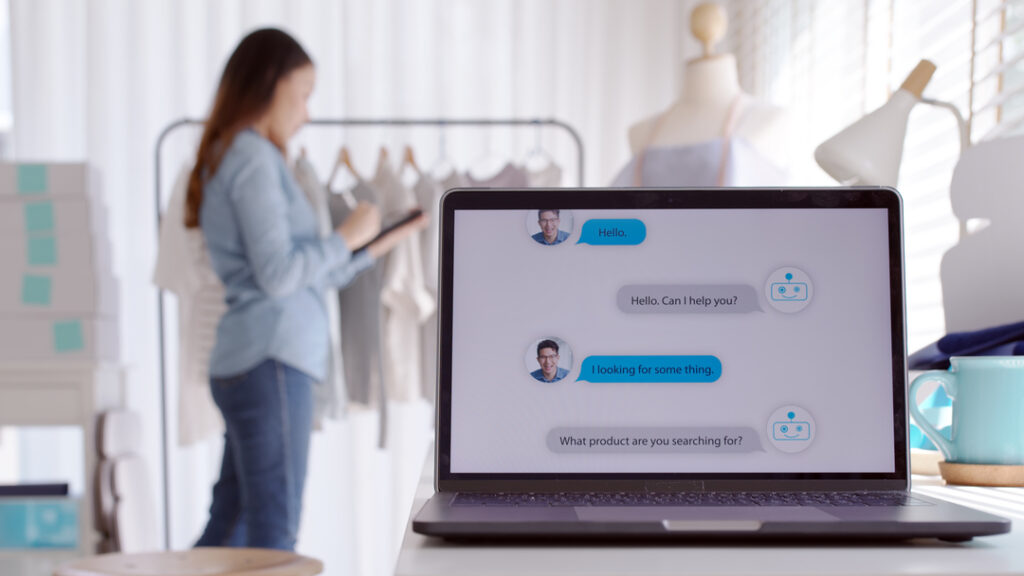A decade ago, artificial intelligence (Al) was the stuff of sci-fi novels, but now it’s something we live with every day.
With a market of $36.8 billion by 2025 and a rapidly evolving marketplace, we can anticipate several incredible developments in the not-too-distant future, especially in this metaverse-enabled era.
Al has enhanced our daily lives through autonomous vehicles, fitness devices, voice assistants, smartphones, and many other technologies and serves to improve the digital marketing efforts of companies across many industries.
Automation can boost a company’s productivity by up to 40% if leveraged strategically. A brand can utilize Al to: Simplify its workflows to deliver more effective marketing campaigns.
As a matter of fact, Al technology can be used strategically and creatively to strengthen your relationship with your customers on a deeper level than ever before, leading to continued company growth.
Putting this notion into perspective, we consider some equally innovative but quite different artificial intelligence applications in digital marketing.
Netflix and AI
There is no need to introduce Netflix, the world’s leading streaming video service. However, many people don’t know that the company’s success can be partly attributed to its innovative use of artificial intelligence.
The user experience (UX) is a crucial component of the ongoing success of any company, irrespective of its industry – and when customers have a good experience with a brand, they are likely to recommend it to friends and family.
Netflix uses Al-driven machine learning technology to tailor its services to individual users to enhance the overall user experience. This includes providing personalized content recommendations based on user’s preferences and past preferences.
Netflix also uses an Al technology to automatically improve streaming quality and avoid any buffering or quality issues.
The fact that 80% of the shows on Netflix are now recommended to users shows its power in a day when consumers are demanding more and more value from the brands they choose to support.
Starbucks and AI
Voice search is used by some 60 million adults every day. Moreover, 72% of Americans own a smart speaker (such as Siri or Alexa).
Starbucks is reaping great rewards from taking advantage of voice technology, which is rising.
Amazon’s Alexa ecosystem was integrated with one of the coffee giant’s most subscribed apps to offer its audience an added layer of consumer value. The ‘My Starbucks Barista’ system now allows customers to place and modify orders, check pickup locations, and change their order preferences – offering seamless integration between voice and chatbot innovation.
Video Source: BlogNT
Hundreds of thousands of Starbucks outlets have been upgraded with Al-powered Mastrena Il espresso makers to offer a more efficient and consistent coffee-making experience thanks to the success of its ‘My Starbucks Barista’ app.
This mobile initiative drives incredible levels of growth and engagement across the world, boasting a whopping 31.2 million mobile customers.
The Economist and AI
Although its audience has dwindled since 2016/2017, The Economist is still a respectable digital publication.
Al-driven programmatic advertising allowed the publication to buy and sell targeted ads autonomously. The Economist identified a segment of its audience that it viewed as reluctant readers by using this process to capture and analyze consumer data in detail.
To find better ways to approach prospects on the web, they automatically analyzed web and app usage to drill down to specific reading habits. By aligning two sets of data, cookie and subscriber data, the publication was able to identify new segments and develop lookalike audiences, helping to boost its audience once again.
This inventive campaign achieved an annual return on investment of 10:1 was achieved by this inventive campaign, which led to 3.6 million new readers engaging with the publication. In a digital space where players are vying for attention, that is no small accomplishment.
Since 2017, the company has continued to grow its subscriber base with a rise of 9% (90,000 new subscribers) from 2020 to 2021 alone – an impressive feat considering the financial challenges.
Nestle and AI
Nestle’s autonomous innovation is last on the list of Al in marketing examples. For a modern brand, it’s crucial to focus on scaled content creation. Your budget will be drained, but you will get little return on investment (ROI) if what you produce isn’t valuable to the customer.
Using natural language processing (NLP) technology, Nestle leveraged its content marketing programs to produce targeted content for various segments of its audience and create personalized communications.
The company also uses artificial intelligence-driven data processing platforms to delve deeply into the hearts and minds of its customers and take action on the insights gained through the process-an innovation that has advanced sales in recent years.
Thoughts on the place of AI in Marketing
In an increasingly competitive digital landscape, the use of Al in marketing can offer significant benefits in terms of growth, evolution, development, and ongoing success as long as it is used creatively and with the consumer’s wants, needs, and desires at the forefront.
In digital marketing, these examples provide a wonderful insight into autonomous technology’s sheer breadth and scope. However, as technology advances, these examples may only be the tip of the iceberg.
By adopting Al today, you can reap great rewards for years to come.




